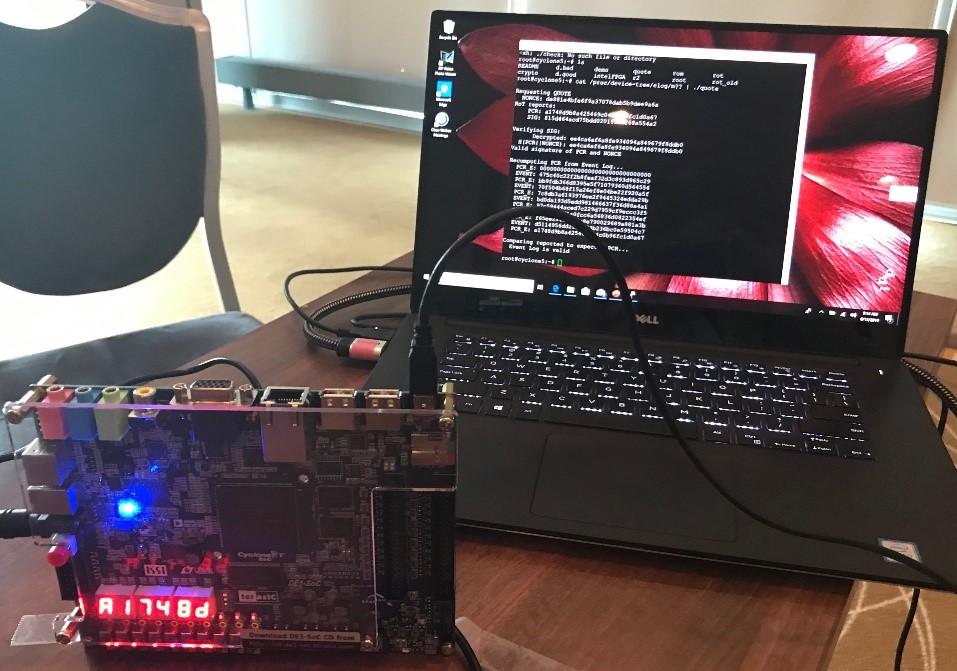Tiny TPM Promises to Secure IoT Devices
The Trusted Computing Group, founded by companies such as AMD, HP, IBM, Intel and Microsoft in 2003 to protect cryptographic keys on computers against tampering, recently announced its work to develop the specification for the “world’s tiniest Trusted Platform Module (TPM).”
What's the Point of a Tiny TPM?
The TCG said that many Internet of Things (IoT) device makers can’t afford to add a full TPM on an IoT board either because of space, cost or power constraints. At the same time, TCG said, many manufacturers still want or need the TPM features in their devices, such as Roots of Trust for Measurement (RTM), Storage (RTS) and Reporting (RTR), so that the devices can work securely within the TCG Measurement and Attestation framework. Through these features, the TPM ensures platform authentication and integrity, making it much more difficult for malicious software to take over a system.
TCG’s new Measurement and Attestation RootS (MARS) Subgroup has been formed to develop specifications for compliant TPM chips with very little overhead for IoT devices.
“In a nutshell, we want to specify what the tiniest TPM needs to be so it can be integrated directly within the host chip," Tom Brostrom, Chair of the MARS Subgroup, said in a statement. "This will ensure that devices that aren’t big enough to integrate a separate TPM will still be able to retain the required RTS/RTR capabilities. In turn, this will allow greater reach of trusted computing technologies over a wider set of devices and use cases.”
In a meeting held in Warsaw, Poland during the inaugural session of the MARS Subgroup, the TCG members announced the first prototype for this type of TPM, called “Radicle.” The team also agreed on the scope of its work, which will focus on the hardware requirements needed to operate RTS and RTR, as well as on the software API needed to access those features.
The Internet of Threats
Four years ago, Eugene Kaspersky, the founder of the Russian security firm Kaspersky Labs, called IoT the Internet of Threats. As we’ve seen over the past few years, the vast majority of IoT devices don’t even seem to take security into account, and many manufacturers don’t issue patches for them on time or at all to fix security issues that may have been found on them after being shipped to customers.
If the devices don’t ship with strong security by default from the factory, it becomes that much less likely that the manufacturers will want to deal with the dozens and dozens of security issues they could have in their first few years of life. Ensuring strong security out of the box should significantly reduce the number of serious issues that will need to be fixed down the line.
Get Tom's Hardware's best news and in-depth reviews, straight to your inbox.
The TCG is playing a small part in trying to secure IoT devices. Besides creating a TPM specification for IoT devices (that’s presumably as secure or at least almost as secure as the regular TPM), they have other projects involving secure firmware and software updates for embedded systems. Arm, the largest provider of microcontroller and CPU IP for IoT devices, is also playing a role in trying to secure IoT devices, through its Platform Security Architecture that involves using a reference open source firmware and other built-in hardware and firmware security features.
When we talk about IoT we’re not just talking about surveillance cameras that can be easily taken over by bad actors to spy on you in your own home, “smart toys” that can be hacked into, or zombie routers that can be used in DDoS attacks. IoT in the coming years will also mean industrial robots that attackers could take over to cripple a large portion of a company’s production, or self-driving cars that can be driven off the highway.
Security will no longer be a feature that’s nice to have, but something that will be critical for the product’s existence and survivability in the market.
Lucian Armasu is a Contributing Writer for Tom's Hardware US. He covers software news and the issues surrounding privacy and security.
